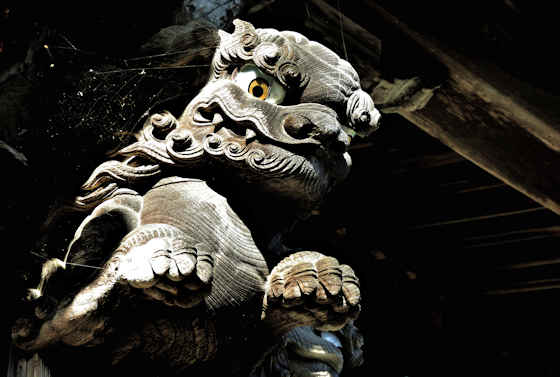Gokurakuji Temple is hidden away in a corner of Kinosaki Onsen and is barely visited by the majority of visitors to the resort town, who will miss a quite remarkable garden.
Called Seikan Tei, it is a karesansui, "dry garden" most often associated with Zen, and Gokurakuji is a Rinzai Zen temple.
It is somewhat unusual in that the garden is in front of the main hall and the entrance pathway cuts right through it. many of the traditional gardens were built to be viewed from the rear of the main hall or from the Abbot's residence.
The most unusual thing, to my mind, was that one half of the garden used areas of white gravel and dark gravel, something I don't remember noticing before.
The light and dark areas are separated by a border made of roof tiles set vertically, something that is quite common.
Actually the light areas inside the dark ground form the Chinese character for kokoro, "heart". This is sometimes the shape of ponds.
The rock and moss "islands" in the sea of gravel also use standard design representations, there being a Crame Island, a Turtle Island, a Three Buddhas Island.....
The garden uses a red rock brought from Kurama, a blue rock from Yoshino, and Shirakawa sand from Kyoto.
I have been unable to establish when the garden was built. Most sources suggest it is fairly modern and a photo of it dates to 1976.
One source suggests it was designed by a disciple of Mirei Shigemori.
Entry is free, so if you are in the area it would be well worth a visit.
Later I will post on the temple and its history and the nice rock garden in front of it.































































